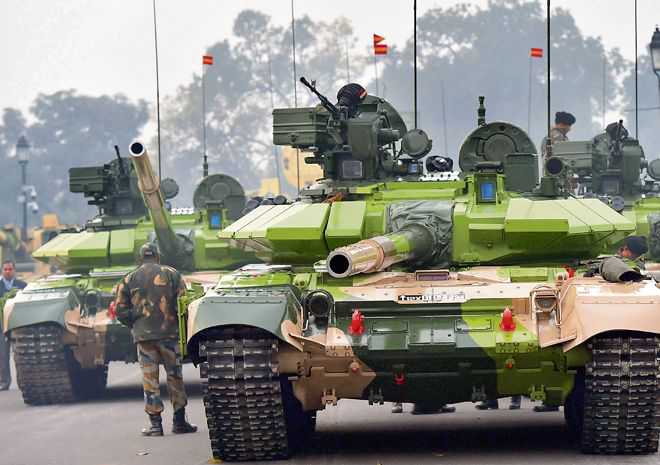India’s security system is in deep trouble; deep reform is crucial

Manoj Joshi
Distinguished fellow, observer research foundation, New Delhi
The allocation for defence in the 2019-20 Budget is over Rs 4.31 lakh crore as against last year’s revised figure of around Rs 4.05 lakh crore, a 6.4 per cent increase over the revised estimates. Since the total government expenditure for the coming year is Rs 27.84 lakh crore, it represents a figure of 15.5 per cent of the Central government expenditure, as compared to that of 16.5 per cent last year.
With a Rs 210 lakh crore GDP estimate, the proportion spent on defence amounts to 2.05 per cent, which is considered quite respectable. But if, as per the Ministry of Defence (MoD) convention, we count only the revenue and capital expenditures, and minus the Rs 17,000 crore spent on the MoD, we come up with another more alarming figure of 1.4 per cent. It has come down from 2.08 per cent, when the Modi government assumed office in 2014-2015.
Another figure teases out the full picture better — that of capital expenditure. The Rs 1.03 lakh crore spent on the capital outlay of the defence services represents 30.7 per cent of all capital expenditures of the Central government. So, the country is spending one-third of its annual outlay of capital expenditure on defence, which is why it is obviously short-changing education, health, social welfare and infrastructure.
Last year, all three services complained that they were not even provided enough money to pay for ongoing acquisitions, leave alone new ones. The Navy wanted Rs 36,000 crore as capital outlay but was only given Rs 20,900 crore. The Army projected Rs 45,000 crore, but was given Rs 26,813 crore, which would have not even taken care of its ongoing commitments totalling Rs 29,033 crore. The fact that the government has increased the capital outlay by nearly 10 per cent to Rs 1.03 lakh crore means little.
Indeed, before the Budget, there were a slew of announcements declaring that the Defence Acquisition Council (DAC) had approved of a submarine project worth Rs 40,000 crore and okayed Rs 1,200 crore for the Milan anti-tank missile. In December, there was approval for four Talwar class frigates and Brahmos missiles for Rs 3,000 crore; in September, Rs 9,100 crore for Akash missiles and some other schemes; in August, the procurement of 111 utility helicopters for the Navy worth Rs 21,000 crore, and another set of equipment costing Rs 24,879 crore; in June, there was an approval of defence equipment worth Rs 5,500 crore.
Clearly, there is something unreal about these decisions, given the available resources. According to one observer, the DAC cleared ‘Project 75I’ submarines in January for the third time in the last decade, which has also, uncharacteristically, seen the overall cost of the project coming down in each instance. And, of course, we have the controversial Rafale deal for which we will presumably have to begin payment in 2019-2020.
That all this appears shambolic is not surprising. India’s defence system is in deep trouble and little or nothing is being done about it. Simply put, the system cannot be run effectively unless it undergoes deep reform, which, in the circumstances, can only be carried out by the political class. PM Modi seems to be uninterested in this process; he’s happy to live in a make-believe world of Bollywood achievements. Defence Minister Nirmala Sitharaman lacks the clout to push through anything.
A country like India has many serious security challenges. It is no one’s case that it should cut defence expenditure. But there is something no Indian should forget — our principal national goal is to end mass poverty and deprivation in the country. Experts will tell you that the poverty rate has halved over the past decade. But that only means people who earn roughly $3 or Rs 230 a day and Rs 6,800 a month. This means that a family must feed, clothe and shelter itself within that amount.
The elephant in the room, too, is well known. The figure of Rs 1.22 lakh crore paid out as defence pensions is nearly one-third of the defence expenditure. No one grudges the ex-servicemen their pensions and their right to OROP. But the government cannot make that as an excuse to underfund the military. Another like amount, roughly Rs 1.25 lakh crore are the pay and allowances of the defence personnel, including the civilians working there.
While there can be huge savings through integration of the three services, reducing headquarter formations, joint logistics, training and housing, manpower cost is the real challenge.
Compared with other militaries, given the threats we confront, the overall numbers are OK. However, there is considerable room to re-distribute personnel — reducing the Army, enhancing the Air Force, Navy and specialised personnel who can service the new military, which needs to be better networked and supported.
While pay and allowances cannot be grudged, there is need to keep the pension bill low. There is a way to manage this, if there is a ‘whole of the government’ approach. This means insisting on a compulsory stretch in the military for all those wanting government jobs. A five to seven-year service in the armed forces would have an 18-year-old available for recruitment in the civil services, paramilitary and the police at the ages of 23-25.
The Parliament’s Standing Committee on Defence did recommend a compulsory five-year service as a pre-condition for jobs in the Union and state governments. Not surprisingly, the proposal is still doing the rounds of the government.
